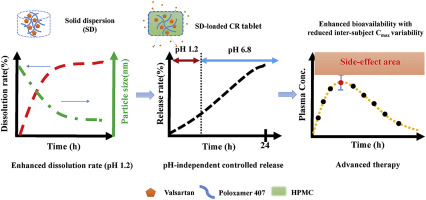- Home
- Blog
- News
- Basics
- Sources
- Agencies, Regulatory & Organisations
- CERSI Excipients Browser
- Excipient Report
- Excipient DMF List
- EXCiPACT Certified Companies
- Excipient Documentation
- Excipient EINECS Numbers
- Excipient E-Numbers
- FDA Inactive Ingredient List
- FDA GRAS Substances (SCOGS) Database
- IPEC Americas
- USP - U.S. Pharmacopeia
- Definitions
- Whitepapers / Publications
- Supplier
- Services
- Media
- Events
- 1st pharmaexcipients Poster Award
- Event Calendar
- Events featured by pharma-excipients
- 4th Annual Formulation & Drug Delivery Congress
- DDF Summit
- ExcipientFest Americas
- ExcipientFest Asia
- Global CompliancePanel
- International Conference and Exhibition on Pharmaceutics & Novel Drug Delivery Systems
- Formulation & Drug Delivery USA Congress
- Laboratory Medicine 2018
- Making Pharmaceuticals Europe
- Making Pharmaceuticals Exhibition
- Pharma Integrates
- PharmaExcipients China @CPhI China
- TTC Technology Training Center
- Jobs
- Online Sourcing
- Contact
29. August 2018
Conversion of liquid and semisolid lipids into free flowing powders is an advantageous technique, as the carriers display high surface area, strong adsorption capacity, ease of processing, and ability to generate lipid loaded free flowing powders which can be converted to solid dosage forms like tablets and capsules. A combination of density, adsorption capacity and desorption is found to be of importance in the selection of the right adsorbent. Adsorbents like magnesium aluminium silicates...
26. May 2018
The aims of this work were to design pH-independent controlled release (CR) tablet containing nanonizing solid dispersion (SD) adsorbed on hydrophilic silica (Aeroperl® 300/30). Valsartan (VAL) was chosen to simultaneously modulate solubility and release rate due to its poor water solubility in low pH condition and short elimination half-life. Based on extensive equilibrium solubility and compatibility studies, poloxamer 407 was selected as a SD carrier. The melted mixtures of drug and...
23. February 2018
The study concerns the synthesis and application of a novel type of ZrO2-SiO2 binary oxide system. The material was prepared via a sol-gel route, using zirconium(IV) propoxide and tetraethyl orthosilicate solutions as zirconia and silica precursors, ammonia as a promoter of hydrolysis, and ethanol as a solvent. Different amounts of reactants were used to obtain samples with ZrO2:SiO2 molar ratios of 1:1, 4:1 and 1:4. The synthesized oxide materials were additionally calcined at 1000 ºC to...
26. October 2017
Mycotoxins are secondary toxic metabolites that are produced by fungi representing threats to human and animal health. The objective of this study was to evaluate the adsorption capacity of Chitosan (CHI), and three cellulosic polymers (HPMC, CMC, and MCC), on six mycotoxins (AFB1; FUB1; OTA; T-2; DON; and, ZEA) using an in vitro digestive model for poultry. The adsorbent capacity of the materials in the supernatant of each compartment was evaluated by a non-competitive chemiluminescent assay....
29. May 2017
Self-emulsifying drug delivery systems (SEDDS) are lipid formulations that improve solubility and oral bioavailability of the incorporated drug with poor biopharmaceutical properties. As liquids they are traditionally filled into soft or hard capsules.
03. May 2017
• Drug-adsorbed porous polymeric adsorbents as oral sustained release formulations. •The adsorption (load) is performed in water medium without use of organic solvents. • The formulations show both sustained release and high oral bioavailability. • The release rate can be controlled by pore size of the adsorbents.
23. March 2017
Abstract The pharmaceutical industry has seen an increased need of carriers or excipients design that allows the controlled release of a drug in the human body. The main role of an excipient is to carry the drug for its administration under therapeutic index. Among the new generation of excipients, the ordered mesoporous silica (MS) presents several advantages, such as excellent biocompatibility, good adsorption capacity, and precise control in the drug delivery. However, the high cost of...
20. November 2016
Abstract Associating protein with nanoparticles is an interesting strategy to improve their bioavailability and biological activity. Solid lipid nanoparticles (SLN) have been sought as carriers for therapeutic proteins transport to the lung epithelium. Nevertheless, because of their low inertia, nanoparticles intended for pulmonary application usually escape from lung deposition. To overcome this problem, the production of spray-dried powders containing nanoparticles has been recently reported....
14. June 2016
Two types of microparticles based on acrylic ion exchange resin were prepared and used as macro-molecular supports for the adsorption of an antibiotic (cefuroxime sodium salt) from aqueous solution. The first type of microparticles was synthesized by aqueous suspension copolymerization of acrylonitrile, ethylacrylate and ethylene glycol dimethacrylate followed by the aminolysis reaction of ternary copolymer with hydrazine hydrate. For the preparation of the second type of micro-particles the...
15. March 2016
A new formulation has been developed successfully, which includes production of highly-porous mannitol particles with high surface areas through the spray drying of mannitol solutions containing ethanol-soluble sugar or food-grade acids as templating agents. The resultant porous particles after ethanol washing have been transferred to ethanol solutions containing the drug component. The results of this study showed that deposition of acetaminophen in the pore-space of highly-porous mannitol...




